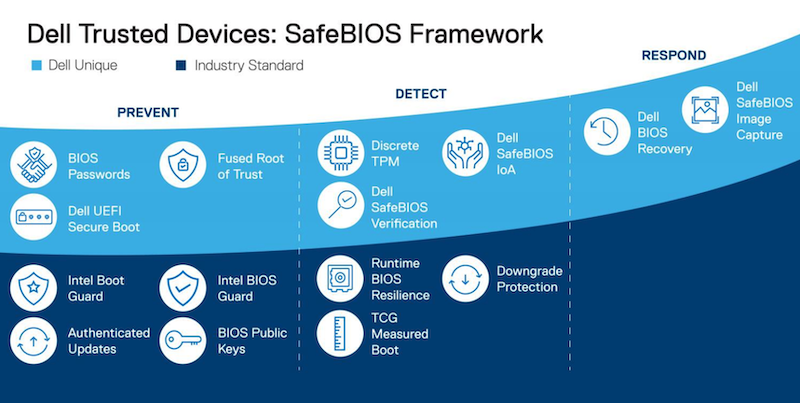Why is this happening?
I think a number of factors have lead to the “stack” or the return to the mainframe model.
One of these is virtualisation. Virtualisation has in many ways collapsed the different components of compute, networking and storage into a blob where differences in each individual layer are diminished. The layers are abstracted away through the hardware independence and it starts to make sense to obtain an entire “virtualisation” machine rather than build it from scratch each time.
Likewise the continue performance improvements means that these more generic solutions can solve a might greater scope of workload than ever before. Certainly the advancement in hardware processing capacity has outpaced softwares ability to consume it.
The second element is the change in behaviour of the vendors. The vendors are much more willing to get in front and sell to end users these days. Even those vendors who are so channel focused do this. I remember 10 years ago in the integration space; it was only the top of town that could get a sales person or a system engineer from a vendor to visit and flaunt their wares. These days, if you are a fish and chip shop you could probably get a vendor to turn up for a presentation and a proof of concept.
However the vendors are realising what the system integrators learnt a long time ago, there is money to be made by combining all the parts and providing a whole solution. Plus the cost of sale can drop if you can have a few packages that fit most sales, rather than doing everything as customised solutions.
The vendors have realised that by using virtualisation and stacks they can make larger sales whilst reducing their cost of sales whilst targeting an increase number of opportunities.
Is this good for end-users?
It is probably a little early to see how the benefits for end users will pan out. If we learn from history the mainframe era certainly had its drawbacks for many organisations towards the end.
There are certainly some up sides for the end users. Improved levels of support and integration can’t be bad. Certainly lower costs by removing lots of customised design work and through economies of scale is going to be a benefit.
But there will be drawbacks too. I don’t think anyone has been thinking or talking about the lifecycle of these stacks. Will you have to replace the entire stack each time at end of life to keep your support? What if you are happy with your compute and storage but have brought in a new networking fabric that is much faster, do you have to throw the baby out with the bathwater?
Where are IBM and Dell?
My hunch is that IBM and especially Dell are in the wings waiting to see how things pan out. Let the early adopters play and make the market, see where the success and failures are. Once they have learned from all of their mistakes they can swing in bringing in their existing value propositions. They don’t want to leave it very long but we are still in the incubation period for the stacks.
I think Dell is the one to watch here rather than IBM. After all they have been essentially doing this today in the lower end of town. They have the parts to bring it together and they can suck the bottom tier right out of the market from under everyone else.
Of course HP is the other one to watch very carefully, especially now that 3Com is on board.
What about the smaller players?
If the stacks take off the smaller players are going to continue to do what they have always done, value add. Many elements of technology have turned to commodity. Remember the days when you would always pay people to come in and do Exchange deployments. Remember how hard it was to maintain Unified Communications solutions. Over time the technologies became utility enough that organisations could do these themselves.
Smaller players, whether they be systems integrators or vendors will continue to find those niche requirements and the hard projects or problems that will always be around. Our consumption of technology is growing not shrinking, the small players will continue to deliver and support the early adoption technologies.
What does this do to innovation?
Many people in IT need to understand that we are in a young industry which is starting to mature. A lot of stuff really is going to become utility and standardised, thats the way industries evolve. Yet innovation still continues in mature industries.
What about cloud?
Bingo, we can’t talk about anything with mentioning Cloud. Are the stacks the vendors means of abating the move of all of the revenue to a handful of global cloud providers. Build an internal Cloud with our stack please so we can keep making some money off you.
I see the stacks working well with the Cloud, certainly the IaaS and PaaS based ones. Improved standards adoption will allow the federation and creation of meta Clouds. So there is still a place for internal work loads (there is some good thinking on this that uses the commercial property market or food production analogies).
What I DO predict we will see is the vendors offering the stacks to Enterprises is Cloud based service models for internal use. How do people consume photocopiers and printers today, they pay per page. The vendor puts in the equipment, maintains it and supplies it, you just pay for what you use. In the future we are going to see this model start to appear more in IT, once you have a utility stack, this can successfully be achieved for the vendor and the Enterprise. By the way virtualisation is the key enabler here, abstracting away all the hardware from the workloads.
Is this the ultimate form of IT infrastructure?
The word “ultimate” makes it sound like the most amazing. No, I don’t think its going to be the ultimate. I think the stacks might become the boring utilities they they are meant to be. A standardised, reliable, cost effective computing block thats does what it is tasked to do, no more and no less. Its the IT version of the multi-function photocopier. Roll them in and roll them out. The stacks are more about an operational model than speeds, feeds, dials and knobs.




